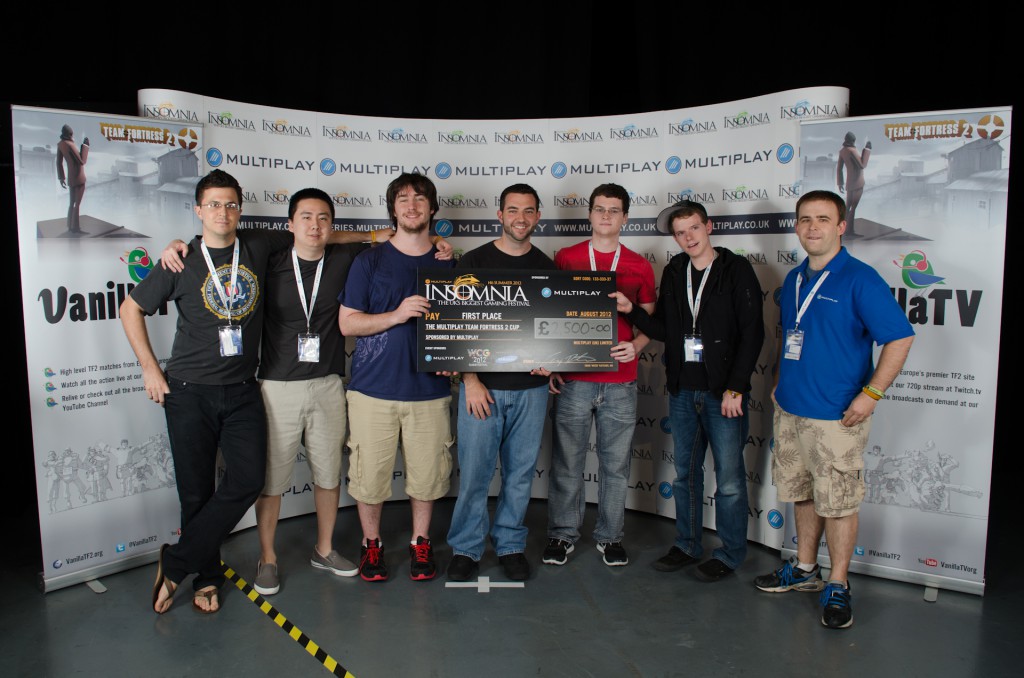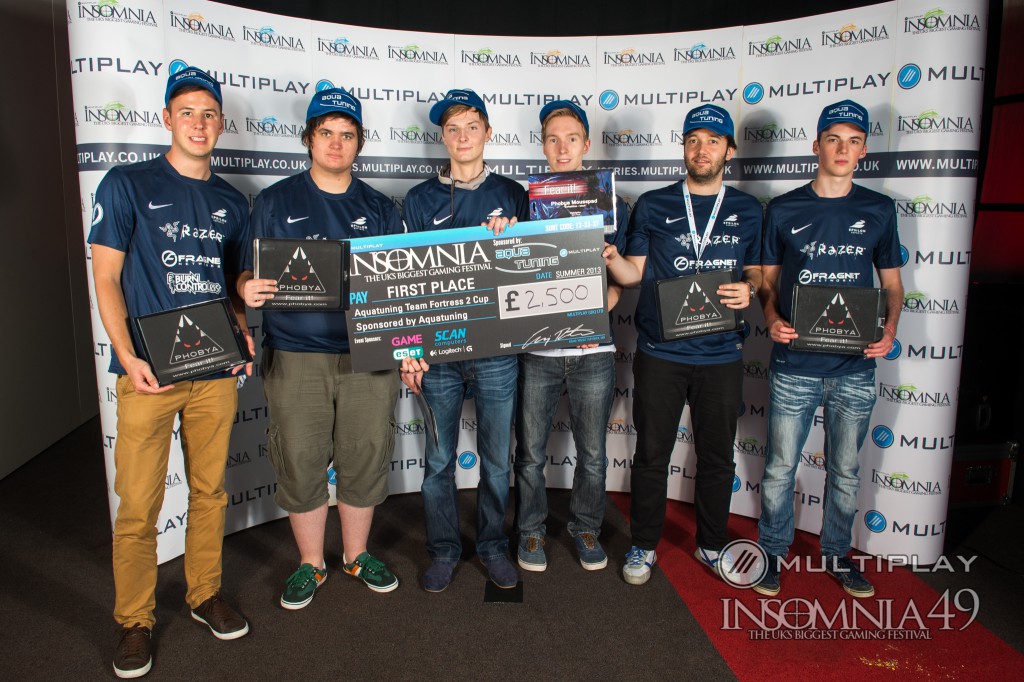World Champions – The Cream of the Crop
Perhaps one of the more prestigious accomplishments that a person may be able to claim is being able to compete directly against the best of the best with the world’s eyes locked upon you. In the new world of e-sports, it somehow becomes more prestigious when you’re sitting right next to them as opposed to not even in the same city. In any case, we call those who emerge victorious champions of the world.
Team Fortress 2 is a curious case among e-sports of the modern day – it doesn’t have a recognized worldwide competition of its own which can determine a truly undisputed champion, greatly attributable to the fact that Valve never really marketed it as a competitive game in the first place. Coupled with latency being a major issue, international leagues never came into the fold, and each of the regional scenes was mostly left to fend for itself. In North America, TF2 has primarily been relegated to being one of the smaller games part of a more expansive league like CEVO or ESEA, while in Europe TF2 has been organized into its own community-run league for quite some time. Records are scant when it comes to the beginnings of TF2, but it can be safely assumed that competitive began not long after TF2 itself came out, and for many years nobody could convincingly call themselves the world champions.
Of course, that all was to change… in 2012, eXtelevision led an effort to send top North America 6v6 teams to the Insomnia 46 Gaming Festival, one of the UK’s biggest LAN events. After a very successful fundraiser, two North American teams were sent to Telford, England to battle it out with top European teams. The key teams at this LAN would be Epsilon eSports, the reigning champions of Europe; Classic Mixup, the recently organized team that looked the strongest coming out of the eXtv qualifiers; and Leviathan Gaming, the champions of the recent season of ESEA Invite. eXtv produced a documentary about the experience which I would highly recommend for anyone and everyone to watch if even remotely interested in this story or in competitive in general. (The video is linked below, and beyond that point come spoilers about what happened, so if you don’t want to get spoiled you should watch the video first and then continue on ahead.)
In summary, the North American teams stunned the competition and competed against each other in the grand finals, with Classic Mixup winning and thus crowned by the community the unofficial world champions of TF2.

The same lineup would later go on the dominate the next season of ESEA Invite, proving that they were demonstrably better than their rivals Leviathan Gaming, capping off with a perfect regular season and postseason performance, a feat never performed before. Leviathan Gaming would split up after that season, with top demoman b4nny forming his own team bp (later sponsored by High Rollers Gaming) that matched Classic Mixup’s feat and nearly doubled it (with only a single map loss in the ESEA finals) in Season 14. Their dominance in Season 13 led HRG to be the recipients of a fundraiser to send them to England to face off against Europe’s best on brightest. Meanwhile, on the other side of the ocean, the established Australian community combined efforts with gracious donors to send the dominant team of Australia, Team Immunity, to also compete for the title.
It is unfortunate that there isn’t a well-produced documentary showcasing the events of i49, but a short summary will have to suffice. iM came out with a strong showing, beating HRG in the group stages but falling short in an upper bracket against HRG and getting knocked out in the lower bracket final against TCM. HRG, which managed to play their way to the upper bracket final but were knocked out by Epsilon, which had completely dominated the tournament, were defeated in a close series by TCM, who proceeded to a grand final that, in a complete reversal of roles, was filled with European teams. Epsilon handily beat TCM to take the title and thus become the second unofficial world champions.

Of course, this is nice and all, but it is a bit disingenuous to call either team absolute world champions when 6v6 isn’t even recognized as the official format of the game (even if it is the most played) and when the tournament isn’t even officially recognized (save for a mention of i46 on the news section of the TF2 blog). The first of those issues is actually pertinent, as it turns out – the venerable format of Highlander is much closer to being officially recognized than 6v6, given that Valve has official support for it in the game (albeit not competitive) and has discussed with leading members of the competitive community the possibility of implementing a competitive lobby system for Highlander.
Of course, what prevents Highlander from receiving a spot on the main stage? The primary problem is of organization – organizing 6 players may be difficult enough, but 9 is even more so – and multiplying in the difficulty of organizing these players into a LAN-attending team makes it nigh impossible. Highlander also suffers a bit from rigidity – with each class guaranteed to be used by at least and only by one player, a source of variability has been lost, requiring the format to rely on using a wider range of maps (including Payload) and more weapons. In addition, Highlander is perceived as more of a messy format due to the number of players on each team, and as a result most top players play mainly 6v6, with the ones that do play Highlander easily getting spots on high division teams; because of this, it’s seen as a less serious format, which has led major paid leagues to not pick it up and left leagues such as UGC and ETF2L to scrounge up and offer what they can as a small incentive to play. (In fact, only recently did UGC start its first effort to have a community-funded prize pool for its top division, Platinum, to compete for.)
Nevertheless, the spirit of world competition did pervade over from 6v6 to Highlander, and national teams from North America have participated in both of the Highlander Nations Cups organized by ETF2L to date. In the first Nations Cup, ending shortly before i46, the U.S. team did managed to get to the quarterfinals before getting knocked out by Finland. The eventual victor of the cup was the team from Germany. In the second Nations Cup, held around the time of i49, the U.S. team put on a much stronger showing, acing all of their matches and being crowned the winners of the second cup despite the European bias of the cup leading to a latency disadvantage for the team. (This iteration later went on to play as Ginyu Force in the next UGC season, widely expected to dominate but falling short due to roster issues.)
That brings us to an interesting question – which players have now been “champions” in both formats, akin to achieving a career Grand Slam? A cursory view reveals that Ruwin, of Classic Mixup and the U.S. national Highlander team, was one of the more well-known players to do so, winning both i46 and the second Highlander Nations Cup. However, he was not the first, as i49’s occurrence a week before crowned both basH. and schocky as winners of the first Highlander Nations Cup and i49.
Of course, this is but the past. Who will have the unique chance to be crowned as the next “world champions”? The complex storylines of TF2 continue, and it is fairly certain that we’ll see them intertwine once again in i52 this summer. One particularly interesting view – b4nny, shade, and cyzer have been sent to Europe twice (as part of Leviathan Gaming and then High Rollers Gaming) to claim glory but have been denied both times by stronger teams, and it’s known that b4nny (who moved on to playing scout since i49 and now will play pocket) and shade (who took a bit of a break from TF2 but still plays medic) will join forces with clockwork (their former partner on Leviathan Gaming), Ruwin (from their rival and champion Classic Mixup), and a couple of other players to form a new ESEA Invite superteam to hopefully crush their competition and earn their ticket to another chance at glory in Europe. Standing in their way is the core of Classic Mixup in enigma, Platinum (now moving over to his favorite position, pocket soldier), and harbleu, joining forces with a few other players to seize their new momentum from the ESEA Season 14 LAN to book their own ticket. Over in Europe, dominating superteam Epsilon eSports has walked away as champions, leaving a slightly more competitive Premiership dominated by the new team Made in Germany in its place, and undoubtedly quite a few of these teams will be seen in Coventry to defend Europe’s hard-won title.
All I can say is that it’ll be an exciting few months. Get ready to catch all of the action, because there will be plenty of it in the coming months with ETF2L Season 17 having already started and signups for ESEA Season 16 starting to gear up.